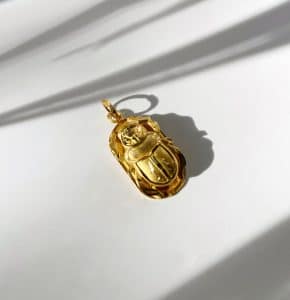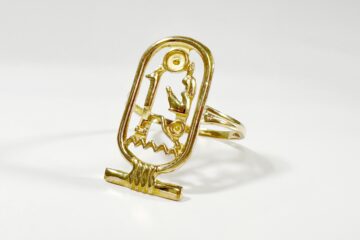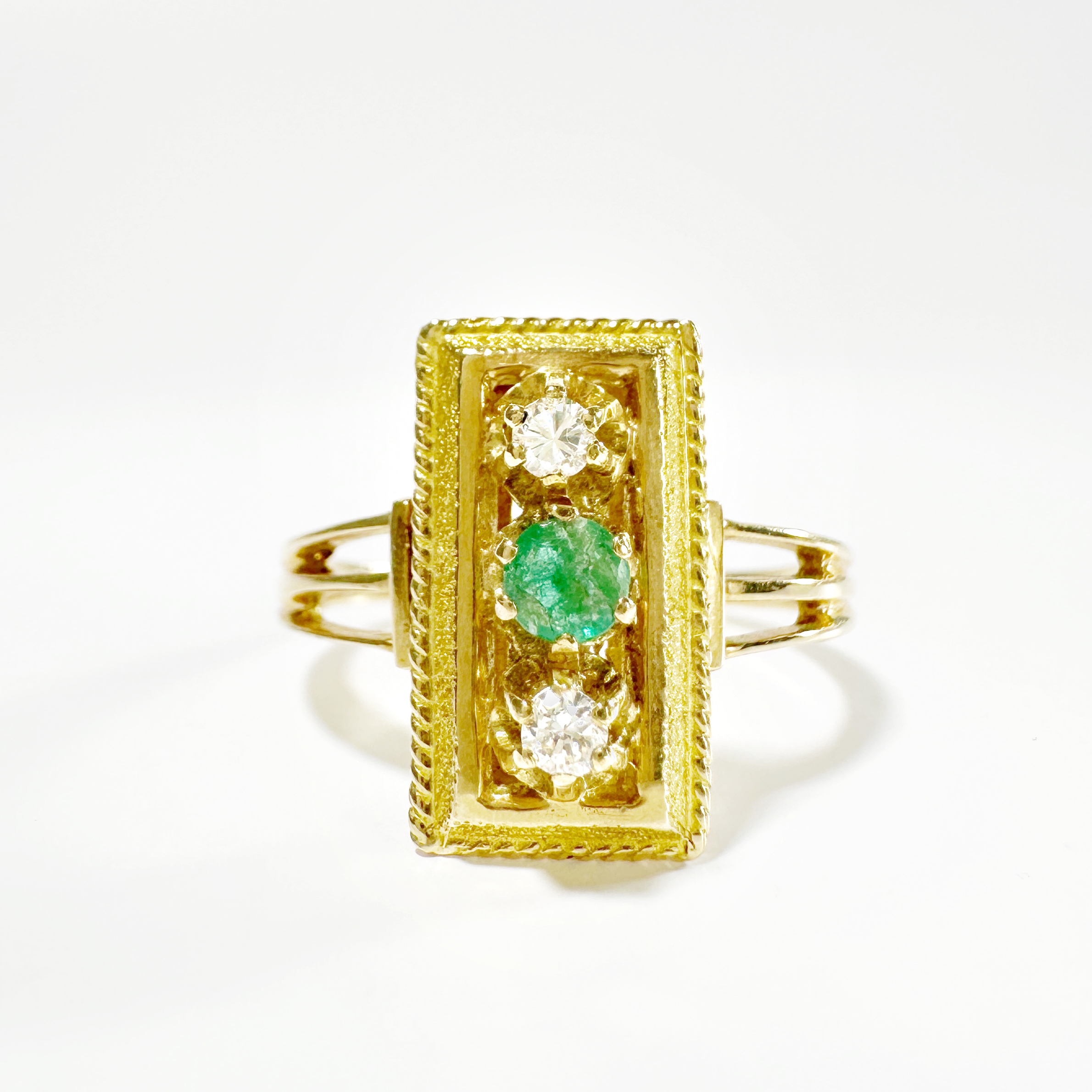 As you know, at ÓNÍSÌ PARIS, we curate antique jewelry from all over the world. For centuries and today more than ever, gold has been one of the most popular metals in jewelry. Nevertheless, depending on the country, the gold titles differ, which gives them various aesthetics and properties, which we will see here.
As you know, at ÓNÍSÌ PARIS, we curate antique jewelry from all over the world. For centuries and today more than ever, gold has been one of the most popular metals in jewelry. Nevertheless, depending on the country, the gold titles differ, which gives them various aesthetics and properties, which we will see here.
BACK TO BASICS: WHAT IS GOLD?
Gold is one of the most precious metals in the world. Its popularity in jewelry is based on its appearance, of course, but also on its physical properties. Indeed, it is so tender and so easy to work that a single ounce (28.35g) could be stretched into an 8-kilometer thread or hammered into a thin sheet of 9 square meters.
It is one of the rarest metals and since it does not oxidize or corrode, its lifespan is infinite. Gold is present everywhere around us, from the earth’s crust to seas, rivers and plants, and yet it is very expensive and difficult to extract. In addition, we have already discussed the environmental impact of this extraction in another article. It is easy to understand the environmental consequences of this industry when you know that you have to mine an ore of 2.5 to 3 tons to obtain a single ounce of gold.
GOLD IN JEWELRY
 Gold is the most popular metal used today in jewelry. This is partly explained by the fact that the most common gold jewel in the world is the wedding ring, worn by both men and women. Nevertheless, as mentioned earlier, pure gold is very soft, which does not make it ideal for producing strong and durable jewelry. This is why it is usually mixed with other metals to make it stronger and prevent it from bending too easily. When two or more metals are mixed, the result is a product called an alloy. Most of the gold used in jewelry is an alloy, and other metals added to gold are also referred to as such.
Gold is the most popular metal used today in jewelry. This is partly explained by the fact that the most common gold jewel in the world is the wedding ring, worn by both men and women. Nevertheless, as mentioned earlier, pure gold is very soft, which does not make it ideal for producing strong and durable jewelry. This is why it is usually mixed with other metals to make it stronger and prevent it from bending too easily. When two or more metals are mixed, the result is a product called an alloy. Most of the gold used in jewelry is an alloy, and other metals added to gold are also referred to as such.
THE CARAT
In jewelry, the term carat or karat has a double meaning: it is a unit of weight used for gemstones, 1 carat weighing 1/5 gram. The carat is also used all over the world to indicate the amount of pure gold that a gold jewel contains. In the United States, to avoid confusion, when this term is used to refer to a quantity of gold and not the weight of a gemstone, it is written with a K. Jewelry must always bear a hallmark to indicate the amount of pure gold it contains.
 The word karat (carat) derives from the word for the fruit of the carob tree (carob): in Italian, carato; in Arabic qirat. Indeed, in the past, the seeds of this fruit were used to weigh gems. In addition, the pure gold Byzantine coin called solidus weighed 24 kt. Therefore the 24 kt hallmark was chosen to refer to pure gold.
The word karat (carat) derives from the word for the fruit of the carob tree (carob): in Italian, carato; in Arabic qirat. Indeed, in the past, the seeds of this fruit were used to weigh gems. In addition, the pure gold Byzantine coin called solidus weighed 24 kt. Therefore the 24 kt hallmark was chosen to refer to pure gold.
THE GOLD TITLES
Each concentration of pure gold in a jewel corresponds to a title. The latter is calculated on a basis of 100% pure gold corresponding to 24 carats. Therefore, an 18-carat gold jewel contains 18 out of 24 gold parts, or 75%. For a 12-carat gold jewel, we have 12 parts pure gold out of 24 so 50%, etc.
GOLD TITLES AROUND THE WORLD
In some cultures, 24 kt gold is required for certain jewelry to be considered as gold. Nevertheless, as mentioned, the latter is generally considered too soft to be used in jewelry. It is also not recommended to wear jewelry set with high carats (20, 22, 24 kt). Indeed, the claws holding the gem can more easily open accidentally and the stone get lost.

In some parts of the world, such as France, 18 kt gold is preferred because of its deep and bright yellow color. In the United States, 14-carat gold is preferred because it is more resistant than high-carat gold. The UK uses 9 and 15 kt gold frequently, which gives the jewelry a lighter yellow shade and a less “flashy” look.
Countries such as Italy, indicate how many shares, out of a total of 1000, are pure gold. One thousand shares would be the equivalent of 24 kt. Seven hundred and fifty means that 750 parts out of a thousand are pure gold: 750/1000 = 75/100 = 75%. This corresponds to 18-carat gold.
Here is a summary table that shows the correspondences between the different international hallmarks for gold.
THE COLORS OF GOLD
 Pure gold is recognizable by its deep yellow color. Since it is too soft to be used pure in jewelry and therefore mixed with alloys, its color will vary. The metals used in alloy are copper, zinc, silver, nickel, platinum. Depending on the alloys used, various colors can be produced.
Pure gold is recognizable by its deep yellow color. Since it is too soft to be used pure in jewelry and therefore mixed with alloys, its color will vary. The metals used in alloy are copper, zinc, silver, nickel, platinum. Depending on the alloys used, various colors can be produced.
Depending on the proportions and combinations of one or more metal alloys used, various colors will be obtained.
Here is a summary of the compositions of gold alloys according to their color:
Yellow gold: gold, copper, silver
White gold: gold, nickel, zinc, silver, platinum, palladium
Rose gold: gold, copper (sometimes a small amount of silver is used)
We hope this guide has helped you navigate the world of gold more easily!
 en
en
 Français
Français




